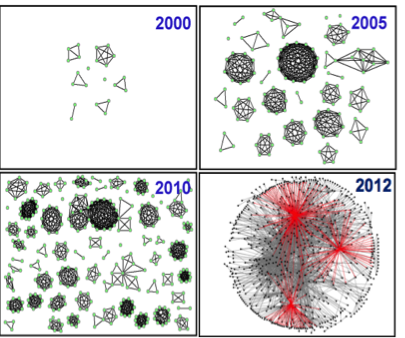 The Woodruff Lab has a large number of groups with whom we collaborate. These collaborations allow us to explore new areas of reproductive biology using sophisticated technologies and innovative ways to think about problems. A description of our collaborations and tools that we use to work at different distances and a different length scales is provided below.
The Woodruff Lab has a large number of groups with whom we collaborate. These collaborations allow us to explore new areas of reproductive biology using sophisticated technologies and innovative ways to think about problems. A description of our collaborations and tools that we use to work at different distances and a different length scales is provided below.
iExperiment
We established iExperiment (iEXP) as a way to share data in real time from the various microscopes in our lab. This enables us to connect with other scientists all over the globe to share new research discoveries and laboratory techniques.
Vidyo and Telesynergy
An unlimited number of viewers can join these online presentations from anywhere around the world, allowing for better fertility case management of young cancer patients and a shared capacity to act.
Repropedia: A Reproductive Lexicon
Repropedia is a reproductive dictionary created by an international team of scientists and clinicians led by investigators at Northwestern University. An editorial board reviews all entries to ensure that definitions are both accurate and accessible to scientists and non-scientists alike.
National Physicians Cooperative
The National Physicians Cooperative (NPC) is a nationwide network of fertility preservation centers.
Oncofertility 101 and Follicle Handbook
The Oncofertility Consortium® provides one-day, small-group training courses called Oncofertility 101 to provide researchers with the tools to study follicle growth in vitro. The handbook describes follicle isolation, encapsulation in alginate, and in vitro culture. In addition, there are protocols for encapsulation in a fibrin/alginate blend, removal of follicles from alginate, and in vitro maturation of oocytes following in vitro follicle culture.
Engineering an Artificial Ovarian with Bioengineer Lonnie Shea
Dr. Woodruff examined the regulation of follicle function in vitro and established a collaboration with a biomaterial scientist, Lonnie Shea, to develop a 3-dimensional support system that would provide the necessary bio-integrity for follicle growth (Tissue Eng. 9:1013, 2003; Tissue Eng. (10):2739, 2006 and Nat. Med. 14:1182). These studies have been very productive and the current culture system supports live births of mice. The system is being adapted to non-human primate (Biol. Reprod. 81(3): 587, 2009) and human ovarian follicles (Hum. Reprod. 24(10): 2531, 2009).
Reproductive Endocrinology and our collaboration with Kelly Mayo
During her years as a graduate student, Dr. Woodruff cloned the subunits composing the hormones inhibin and activin and later characterized their regulation in the rat estrus cycle (Molec. Endocrinol. 1:561, 1987). This work was done in the laboratory of Dr. Kelly Mayo at Northwestern University. This strong collaboration between the Mayo and Woodruff labs continues today and their major goals are to identify the mechanisms underlying ovarian follicle development, selection and recruitment to understand better the endocrine and paracrine control of the reproductive axis and provide new angles on ovarian disease and fertility conserving options for women.
The Inorganic Signature of Life: Collaborations with Chemist Tom O’Halloran
The research team is composed of reproductive biologists, synthetic chemists and imaging specialists whose common objective is to understand the process of fertilization from a novel, interdisciplinary perspective. One of the most siginifcant discoveries has been the zinc spark. Together they have learned that in last few hours of maturation, the mouse oocyte takes up over twenty billion zinc atoms and arrests after the first meiotic division, until fertilization or pharmacological intervention stimulates cell cycle progression toward a new embryo (ACS Chem Bio 6(7):716,2011).
